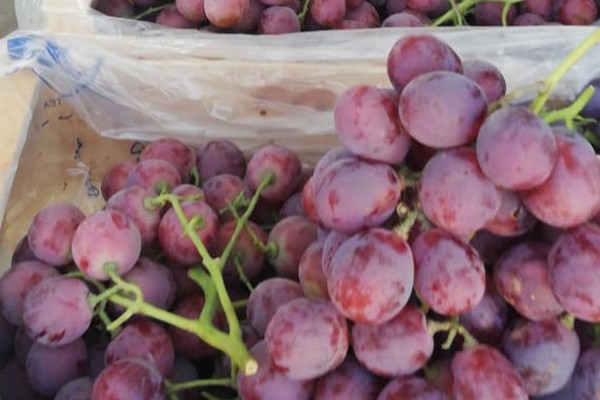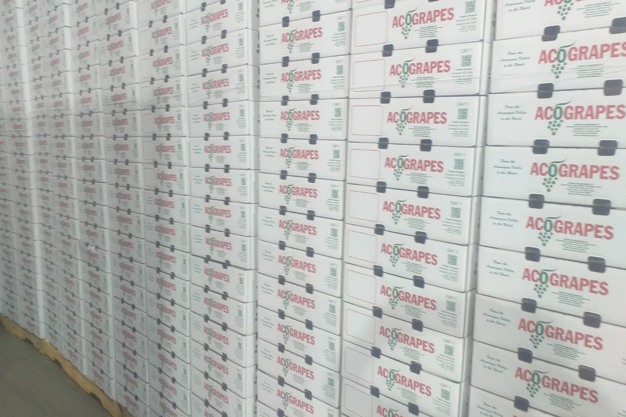The very strong US demand for table grapes from Chile is continuing, with exporters sending as much fruit as they have available, despite a delay in the harvest in the central parts of the South American country. Cristian Ferriere, export manager from Acograpes in Chile, "Peru finished 2-3 weeks earlier. It helps the Chilean grapes industry a lot to keep the high FOB prices in the US during February that will probably last until March 15-20 with over $30 per box for all colours and varieties. It is not normal for this early in our export season, but it is very good for us."

Acograpes still do well with the Red Globe grape exports from Chile.
He says the delay in Chile's harvest is partly due to two main factors, the weather and later varieties that have planted in order to avoid a large overlap with Peru during January and early February. "In the past we harvested 40% of our volumes at the end of February, right now we harvested only 20% of our total volumes due to the later varieties and delay caused by the weather. We should do around 660,000 8kg's this season. In the technical area the agronomists say we had a cold spring in the central area of Chile during September through to November as well as the early part of December. This means the flowering was late, the growth of the fruit was slower because the temperature was lower compared to the last few springs. In January the hot temperature started, but it was not able to help too much in making up for the delay. The last few years in the early parts of the season we overlapped with Peru. In general, several companies cut a portion of their early varieties to avoid part of this overlap. That's why Chile planted later varieties, because Peru's grapes is exported to the same markets as us. We planted more late varieties and now have more fruit that's later. This increased the delay, because there is now naturally less early varieties. These two facts make the harvest and export volumes later."

Big gap in US market
Ferriere says they see a big gap in the US market especially until mid-March when volumes from Chile will pick up to reach their peak harvest season. "There's a big gap until March 15 or 20. We see a good volume arriving from March 20 to April 15-20. The fruit is hanging there, but with a delay. The fruit shows nice colour with better sizing than last season. Chile will offer a good volume, the pricing would need to be adjusted, while there will need to be more promotions in three or four week's time to move the sales of the higher arrivals. We are crazy in sending most of our grapes to US market, but they are paying the good high prices, therefore our focus as Chile is to send as quickly as possible to the States to try to catch these prices."

Other markets don't offer current US prices
He says the Chilean grape industry is currently sending 70-80% of their volumes to the US market. "We normally send between 50%-60% to the US at this time. Other markets are also asking for fruit, but it is difficult for them to reach the US price levels. The European market is paying decent prices that are a little bit higher than last season. However, it is difficult to send seedless grapes to Europe if we have such a good market in the US. Another factor is Latin America that is also paying good money. They have to, because if they don't pay decent money this season, they might not get fruit next season. We are also sending fruit to Asia."
He expects that Chile will turn their focus away from the US to other markets when the US prices decrease a little after mid-March. "From March we're going to diversify a bigger portion of our fruit to other markets when the US is expected to lower their prices due to the large arrival volumes. We will then focus strongly on sending to other markets," concludes Ferriere.
For more information:
Cristian Ferriere
Acograpes
Tel: +56 9 5063 5766
Email: [email protected]







